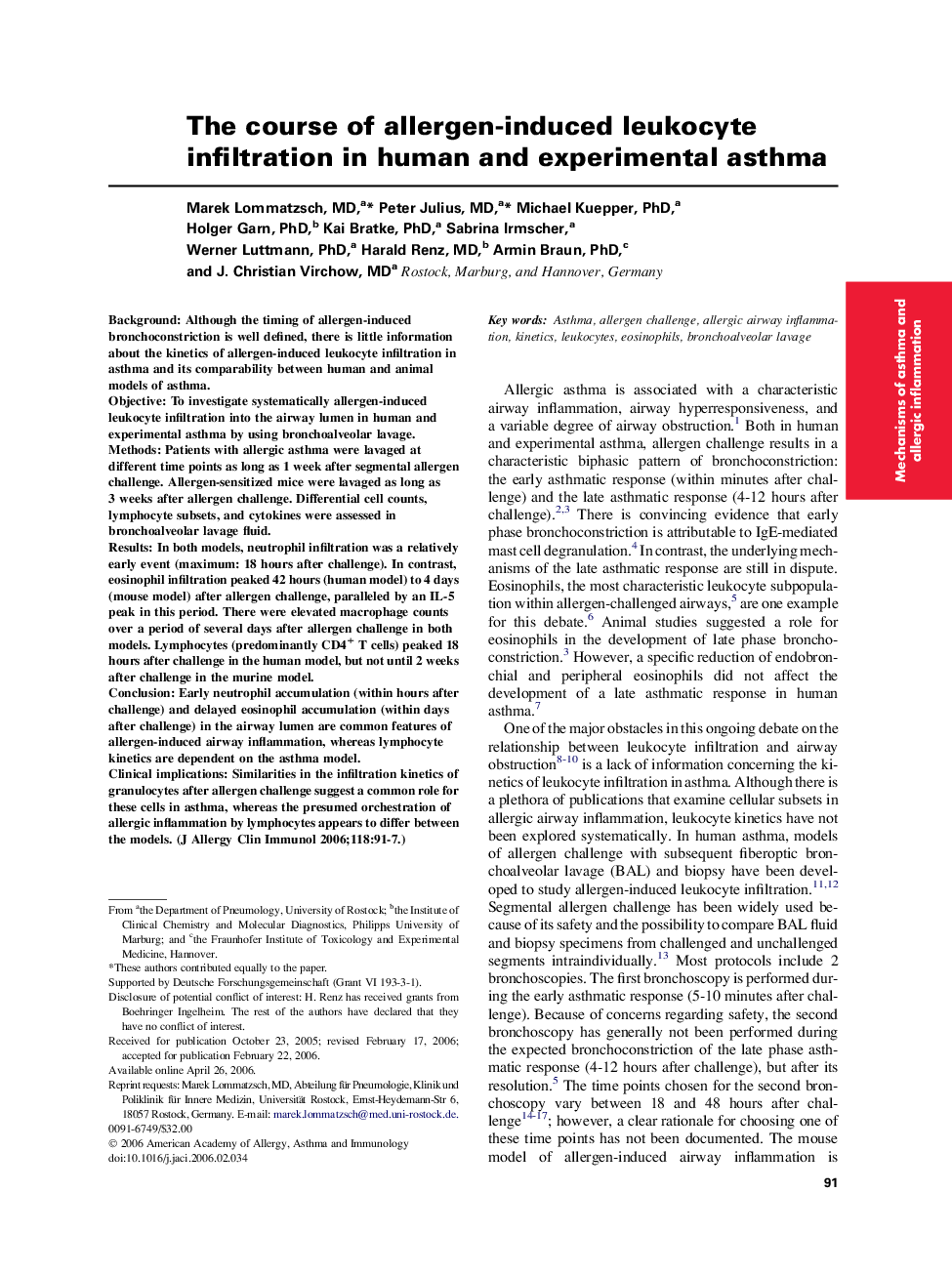| Article ID | Journal | Published Year | Pages | File Type |
|---|---|---|---|---|
| 3202494 | Journal of Allergy and Clinical Immunology | 2006 | 7 Pages |
BackgroundAlthough the timing of allergen-induced bronchoconstriction is well defined, there is little information about the kinetics of allergen-induced leukocyte infiltration in asthma and its comparability between human and animal models of asthma.ObjectiveTo investigate systematically allergen-induced leukocyte infiltration into the airway lumen in human and experimental asthma by using bronchoalveolar lavage.MethodsPatients with allergic asthma were lavaged at different time points as long as 1 week after segmental allergen challenge. Allergen-sensitized mice were lavaged as long as 3 weeks after allergen challenge. Differential cell counts, lymphocyte subsets, and cytokines were assessed in bronchoalveolar lavage fluid.ResultsIn both models, neutrophil infiltration was a relatively early event (maximum: 18 hours after challenge). In contrast, eosinophil infiltration peaked 42 hours (human model) to 4 days (mouse model) after allergen challenge, paralleled by an IL-5 peak in this period. There were elevated macrophage counts over a period of several days after allergen challenge in both models. Lymphocytes (predominantly CD4+ T cells) peaked 18 hours after challenge in the human model, but not until 2 weeks after challenge in the murine model.ConclusionEarly neutrophil accumulation (within hours after challenge) and delayed eosinophil accumulation (within days after challenge) in the airway lumen are common features of allergen-induced airway inflammation, whereas lymphocyte kinetics are dependent on the asthma model.Clinical implicationsSimilarities in the infiltration kinetics of granulocytes after allergen challenge suggest a common role for these cells in asthma, whereas the presumed orchestration of allergic inflammation by lymphocytes appears to differ between the models.
